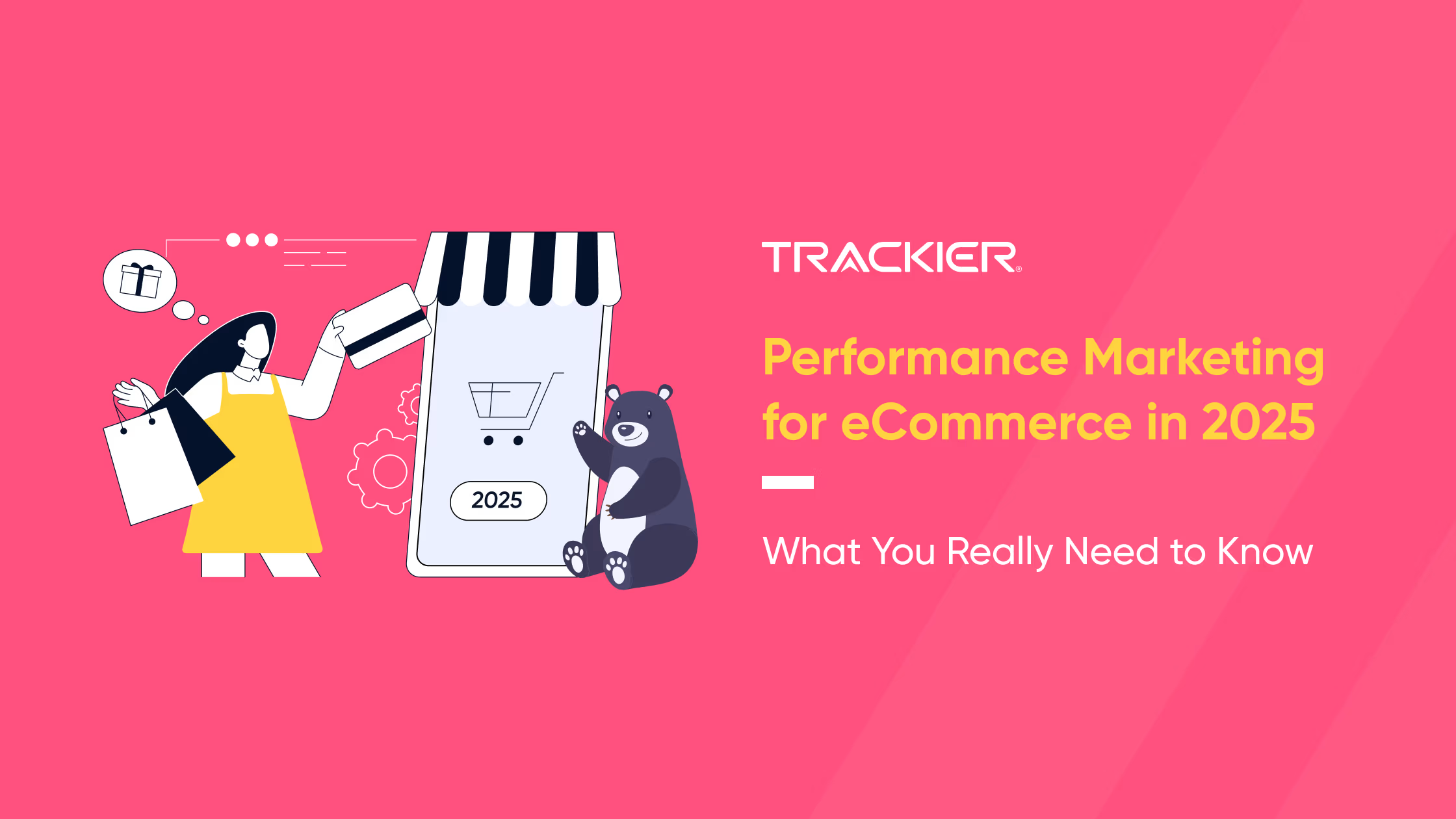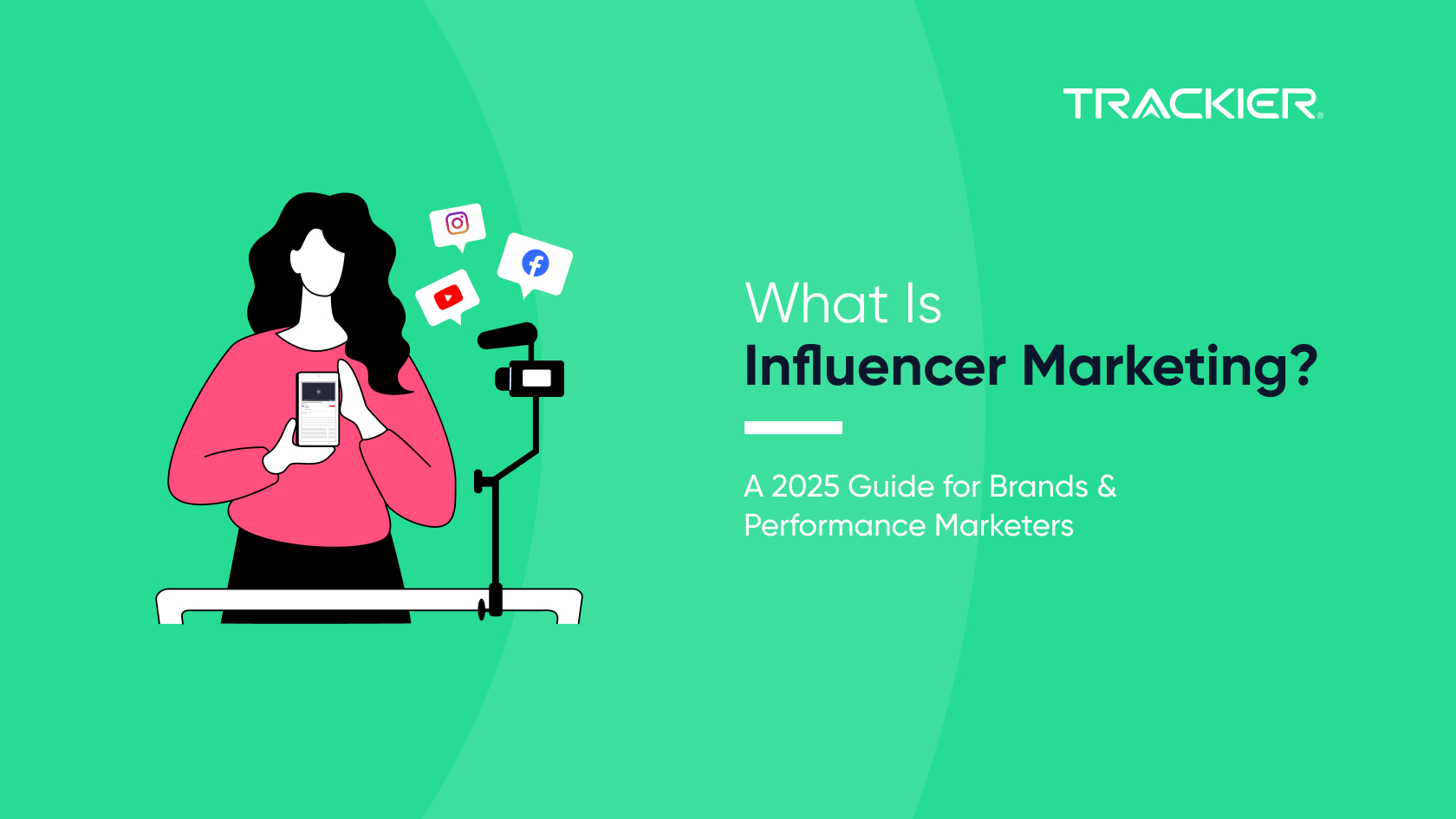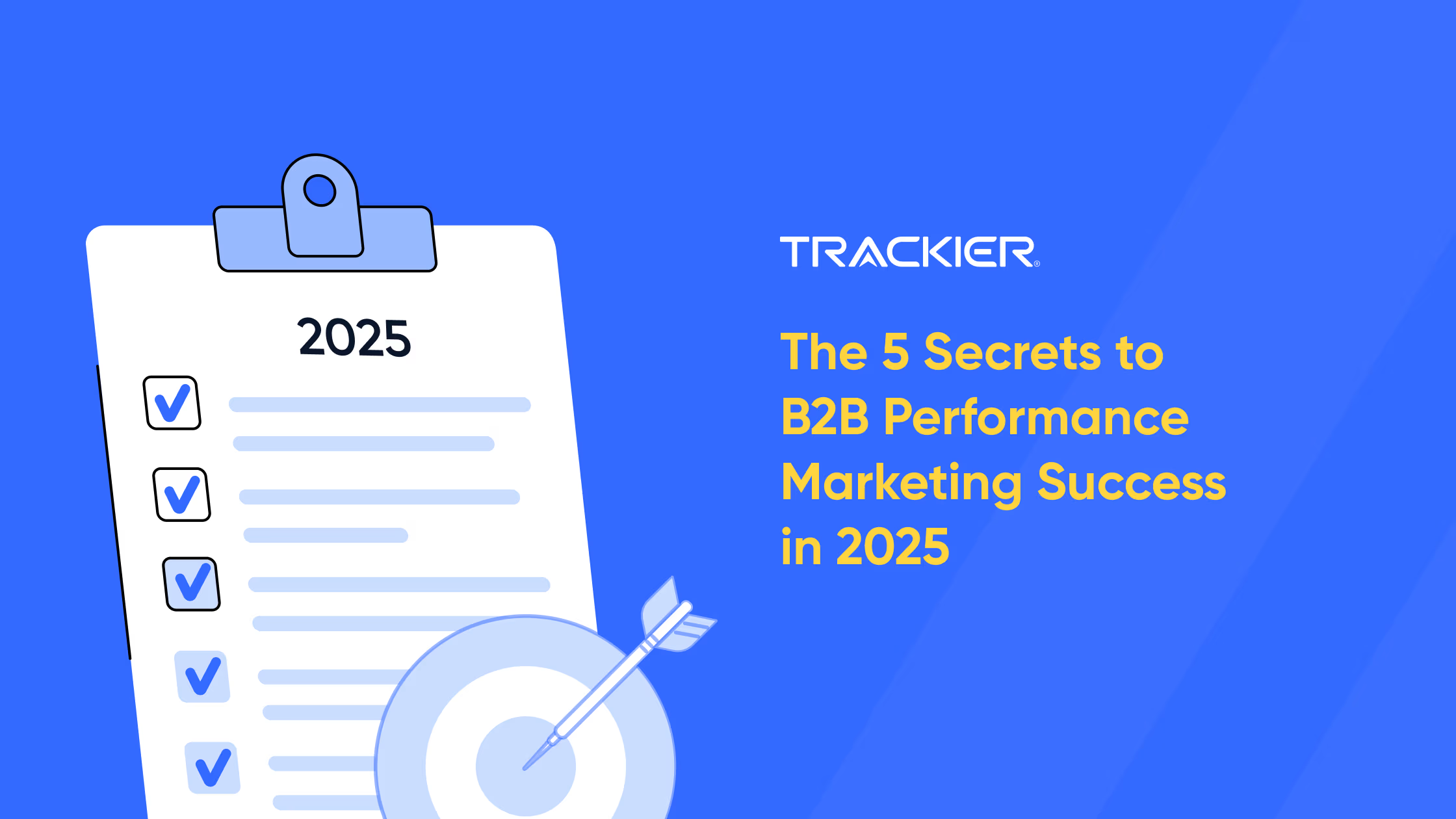If you’ve ever run an ad and thought, “I really hope this works,” you’re not alone.
But in the eCommerce sector, hope isn’t a strategy. Performance marketing, thankfully, is.
Performance marketing for eCommerce is the model where every cent you invest can be attributed to a tracked result, something eCommerce brands are pivoting towards heavily in 2025, as seen in this breakdown by Admetrics.
Gaining attention for your product isn’t just the issue. The real issue is making certain that the attention you are gaining belongs to people who are truly going to make a purchase.
At Trackier, we have witnessed hundreds of eCommerce brands abandon traditional campaigns in favor of performance-based campaigns, providing better tracking, a better ROI, and way less guesswork.
Performance Marketing Strategies to Actually Help eCommerce Brands
Every brand wants better numbers. But not every brand wants to sit through 80-slide strategy decks.
So, here’s what actually works in performance Marketing for eCommerce, in 2025:
Understand Your Customer’s Click Path
You cannot market without understanding how people shop. Start by tracking:
– Where did they first hear of you (Google? Instagram? That one email campaign?)
– What they clicked on next
– Number of steps of conversion
That’s your shopper breadcrumb trail. And if it’s confusing or too long, they’ll drop off.
Focus on Quality Channels, Not All Channels
You have to be really careful and choosy about what channels to focus your efforts on. Sure, you would love to be on every platform. But if your customers don’t hang out on Snapchat or LinkedIn, why are you wasting time, effort, and even budget there?
Stick to high-performance zones like:
– Google Shopping Ads
– Facebook + Instagram Ads
– Affiliate campaigns with ROI-focused partners
– Email remarketing for abandoned carts
Segment, Then Personalize
Mass messages feel… , untargeted, impersonal and a tad dull. So, tools to segment users on the basis of:
– Product interest
– Location
– Purchase history
Then talk to them like humans. “Hey Nandini, still thinking about that linen jumpsuit?” is miles better than “Get 10% off sitewide.”
What’s Changed in Ecommerce Performance Marketing in 2025?
So much, honestly.
The algorithms, the user behavior, even the ad costs. What worked last year might be burning your ad budget today. Digital Commerce 360’s latest report shows how performance strategies are evolving fast to keep up with tech and buyer expectations.
Here’s what’s different:
Privacy Is Front and Center
Thanks to cookies’ crumbling and iOS updates, tracking users feels like detective work now. First-party data is your new best friend. Ask for emails. Offer gated content. Incentivize logins.
Video Is Everywhere
Short-form video ads have taken over static images. They’re sticky, relatable, and way more likely to convert according to Wyzowl’s latest report.
Bonus tip: influencer-style videos (even UGC) are killing it this year.
More Emphasis on Attribution
Multi-touch attribution is not optional anymore. Learn how it works and why knowing what influenced your sale is as important as the sale itself.
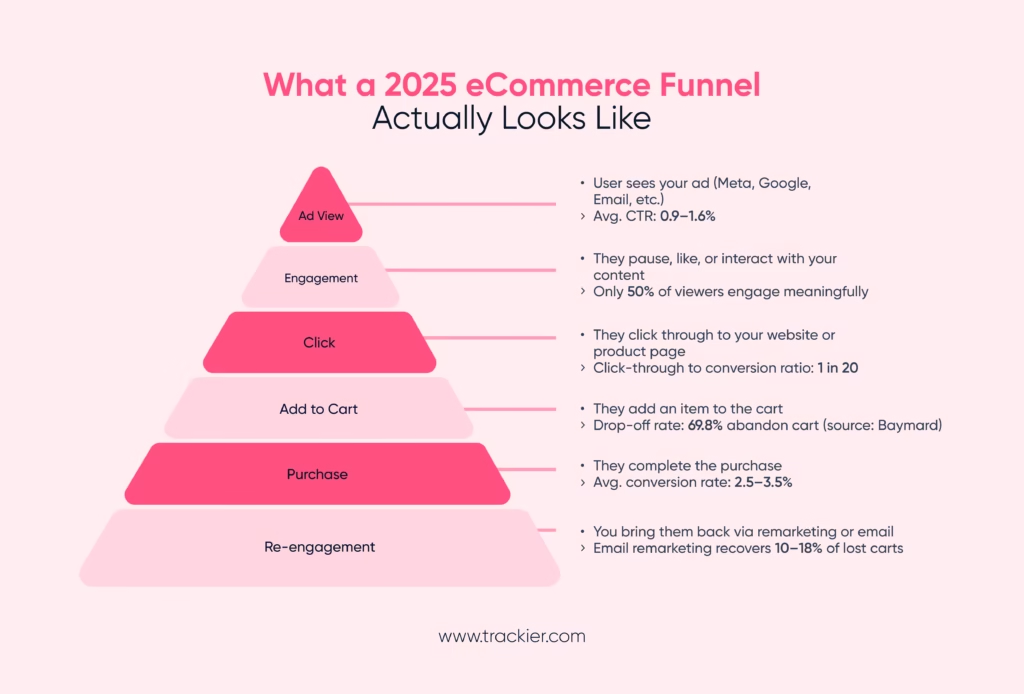
How to Create a Performance Marketing Plan That’s Not a Shot in the Dark
Planning sounds boring. But it’s just another word for “not wasting money.”
Here’s a simplified flow to get you started:
1. Set Clear Goals (No, Not Just “Get Sales”)
Be precise: do you want 100 purchases, 2x ROAS, or a 25% lower CAC?
2. Choose the Right KPIs
Depending on your goal, track:
- Conversion Rate
- Customer Acquisition Cost (CAC)
- ROAS
- Lifetime Value (LTV)
3. Build Campaigns Backwards
Start from the outcome you want, then map:
- Where the user will come from (channel)
- What they’ll see (ad/offer)
- Where they’ll land (landing page)
4. Test, Tweak, Repeat
A/B testing isn’t new, but it’s underused. Change headlines, creatives, even CTA button colors. Then go with what works. Guessing won’t work, you need to check the data.
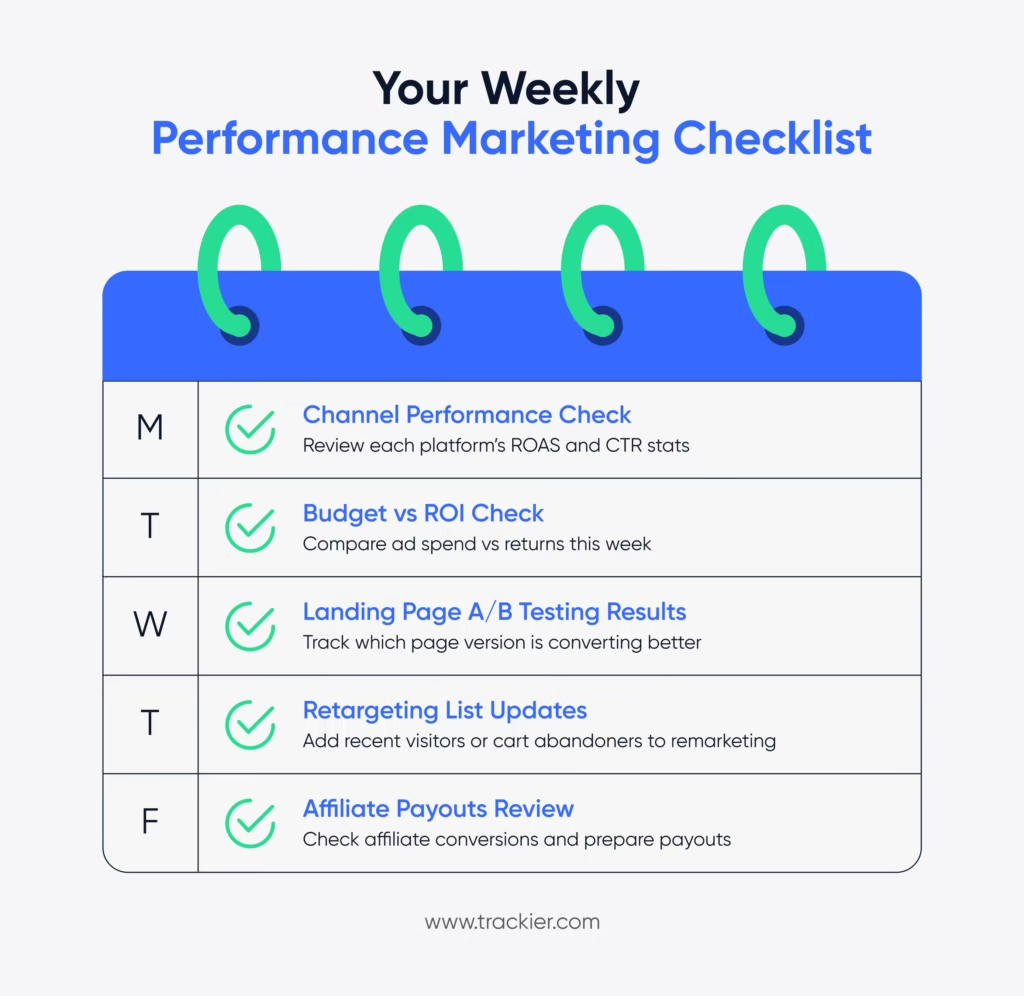
Why Do You Need an eCommerce Performance Marketing Software Like Trackier?
Let’s be real. Doing all of this manually is like trying to track parcels with pigeons.
A performance marketing software, helps you:
- Track every touchpoint (click to conversion)
- Manage affiliate and influencer partners in one dashboard
- Prevent click fraud before it eats your budget
- Get automated reports with real-time insights
It’s your campaign control center. You plug it in and watch the chaos get organized. Brands using Trackier have reported a 22–35% increase in conversion rate and a major drop in wasted ad spend.
Ecommerce Marketing Strategies That Actually Work (Yes, Even Today)
Here are a few go-tos that are still killing it:
Retargeting, but Smarter
Use dynamic product ads on Meta or Google that follow your user with what they actually viewed.
Referral Programs
People trust people. Give your users a reason to talk about you. “Give ₹100, Get ₹100” works like a charm. Here’s a quick read on referral marketing for B2B.
Influencer Collabs That Don’t Feel Like Ads
Choose micro-influencers whose audience matches yours. Don’t ask them to sell, instead, ask them to share. Authenticity beats polish.
Performance Marketing for eCommerce Isn’t Just For The Big Fish
Look, you don’t need to be Amazon to run smart, high-performing campaigns. You just need:
- A clear goal
- The right tools
- A way to measure what’s working
Start small. Focus on the basics. Track what matters.
Want to see performance marketing in action? GrabOn’s case study shows how they scaled revenue by 70% with Trackier’s platform.
FAQs on Performance Marketing for eCommerce
1. What is performance marketing for eCommerce?
It’s a marketing model where you only pay for measurable actions like: a sale, click, or lead.
2. How is it different from digital marketing?
Performance marketing for eCommerce is measurable. Every dollar has a purpose. Traditional digital marketing might not always have that clarity.
3. What are the 5 C’s of e-commerce?
Customer, Convenience, Cost, Communication, and Customization.
4. How do I measure eCommerce performance marketing?
Track KPIs like ROAS, CAC, LTV, and conversion rates. Use software for attribution.
5. What’s the best software for eCommerce performance marketing?
We’re biased, but Trackier gives you real-time data, click fraud protection, and full-funnel tracking. Try it for yourself.
